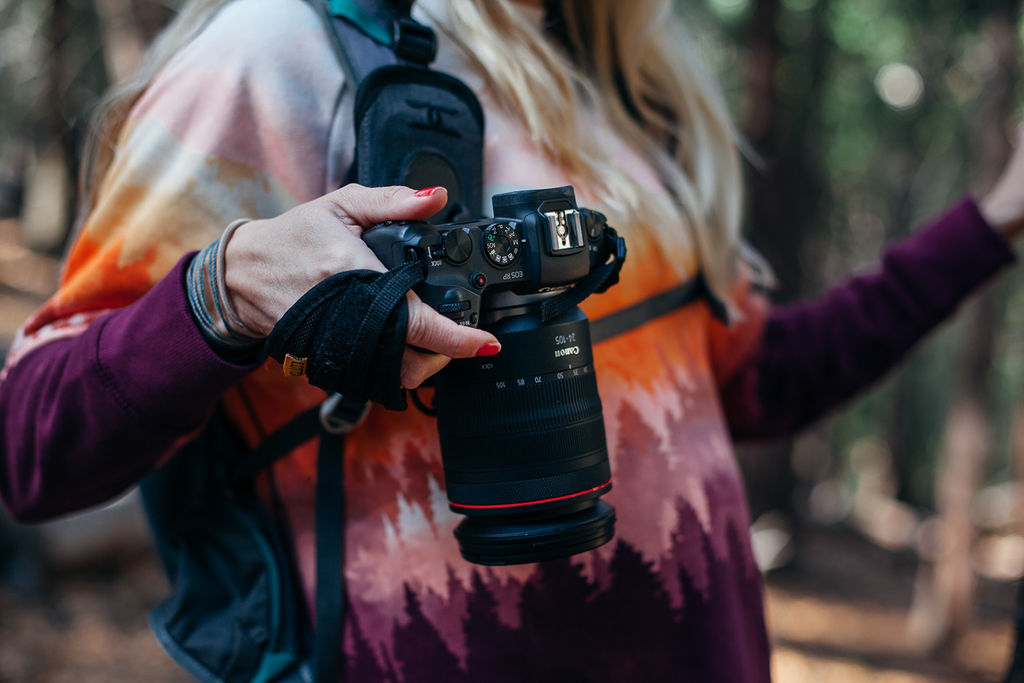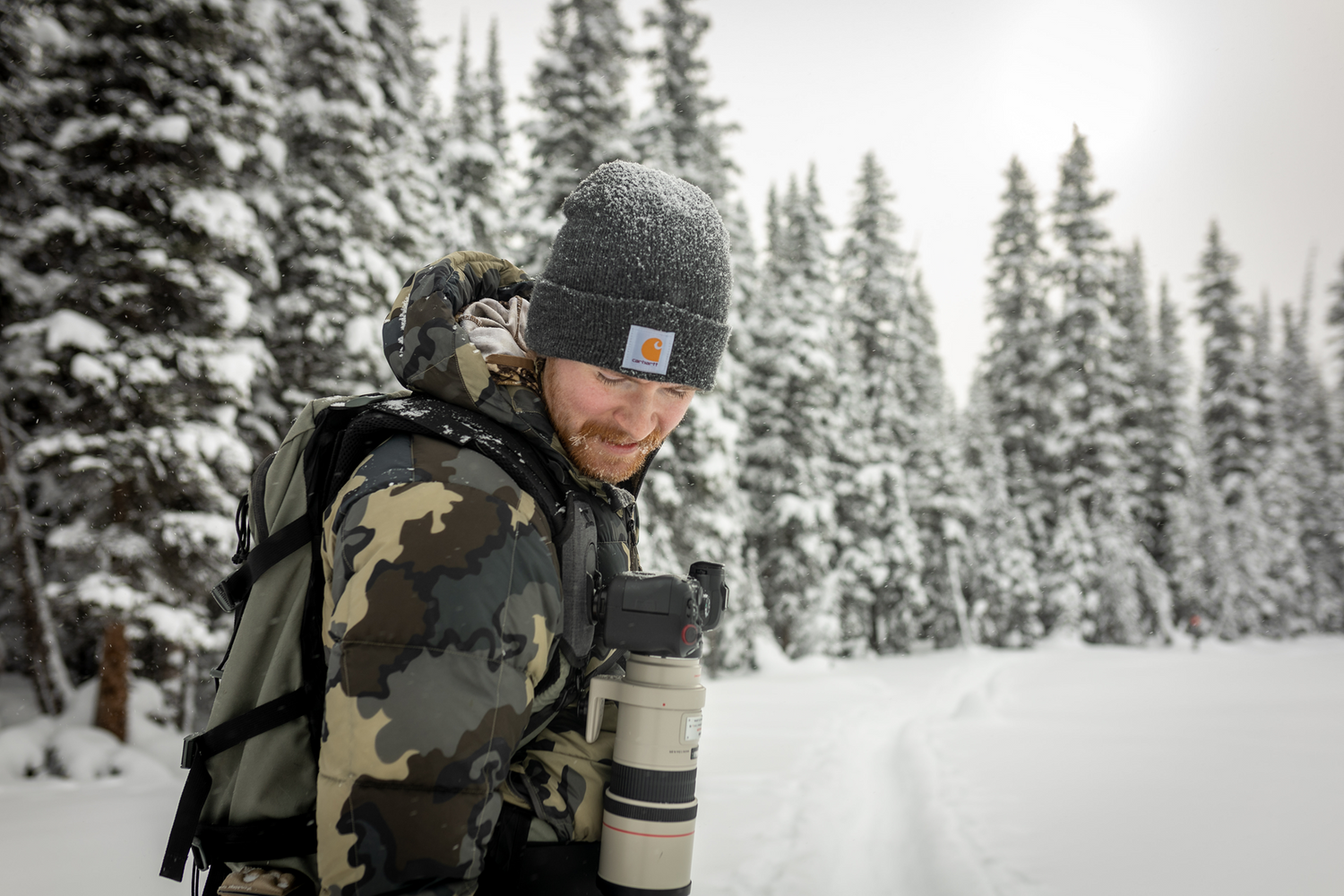When it comes to professional photography, the gear you choose can make all the difference, and something as simple as your camera strap plays a crucial role in your comfort and efficiency during shoots. Whether you're photographing an event, out in nature, or working in a studio, the right camera strap can significantly enhance your experience by offering support and freeing up your hands when needed. In this post, we’ll explore why many professionals opt for camera harnesses, how camera slings also play a role, and who camera straps are best suited for.
1. The Shift Toward Camera Harnesses
Professional photographers increasingly favor harness systems over traditional neck or shoulder straps. These harnesses offer better support and versatility, making them a more practical choice for demanding shoots.
- Better Weight Distribution: Unlike a single strap that places all the pressure on one part of the body, a harness evenly distributes the weight across both shoulders, reducing strain on the neck and back. This is especially important for photographers who carry heavy camera bodies or large lenses for hours on end.
- Hands-Free Flexibility: A harness allows photographers to move freely without worrying about their camera swinging around. It also provides quick and easy access to the camera when needed, which is crucial for capturing spontaneous moments.
2. Camera Slings: A Lightweight and Flexible Option
While harnesses are ideal for heavy gear and long shoots, camera slings are another popular option among professionals, especially those who need to travel light or work in more dynamic environments. Camera slings offer a different kind of support that many pros find valuable in certain situations.
- Quick Access: Camera slings typically rest across the body, allowing the camera to hang at the hip or across the back. This setup allows for quick and easy access to the camera, making it a great option for street photography, travel, or any scenario where you need to shoot quickly and efficiently.
- Lighter Load: For photographers carrying lighter equipment or just one camera body with a lens, a sling can be more practical than a full harness. The sling keeps the camera secure but still allows for movement and flexibility, making it ideal for more casual or on-the-go shoots.
- Adjustability: Camera slings often feature adjustable straps, allowing photographers to customize the fit for maximum comfort. Whether you need the camera close to your body or prefer a little extra slack, slings provide the flexibility to adapt to your shooting style.
3. Who Should Use Camera Straps?
Although many professionals prefer harnesses and slings, traditional camera straps still have their place in the photography world. For some photographers, especially those with lighter setups or those shooting in less demanding environments, a well-designed camera strap can provide all the support they need.
- Hobbyists and Enthusiasts: For hobbyists or casual photographers who don't carry their cameras for extended periods or in extreme conditions, a traditional camera strap can be a convenient and comfortable choice. Simple neck or shoulder straps are easy to use and offer enough support for lighter camera setups.
- Studio Photographers: Studio photographers who work in controlled environments and don't need to carry their cameras for long durations might find that a standard strap is more than sufficient. Since they often move between handheld shots and tripod use, a simple strap allows them to detach and reattach their camera quickly.
- Lightweight Shooters: Photographers using smaller mirrorless cameras, point-and-shoots, or other lightweight gear may prefer the simplicity of a strap. For these setups, a heavy-duty harness might be overkill, and a well-made strap can provide all the comfort and accessibility needed.
4. Comfort Is Still Key
Even though many professionals use harness systems or slings, comfort remains a top priority. Long hours in the field, whether you're covering a wedding or trekking through the wilderness, can take a toll on the body. That's why the design of the harness, sling, or strap plays a crucial role in ensuring photographers can keep working without pain or fatigue.
- Padded Support: Camera straps, slings, and harnesses often come with padded sections to reduce strain during long shoots. This padding helps reduce pressure points and makes it easier to carry heavy equipment for extended periods.
- Crossbody and Multi-Point Systems: Many slings and harness systems use crossbody designs or multi-point connections, which allow the camera to rest comfortably at the side of the body. This helps avoid the common issue of neck strain associated with traditional camera straps.
5. Security and Durability Matter
For professionals, securing their expensive gear is paramount. Whether using a strap, sling, or harness, the reliability of the attachment points and the strength of the materials are critical.
- Heavy-Duty Materials: Professional-grade camera straps, slings, and harnesses are typically made from durable materials like reinforced nylon, leather, or synthetic fabrics. These materials are designed to handle the weight and constant use that professional equipment demands.
- Secure Fastening Systems: Professionals value straps and slings with strong, reliable attachment points that securely fasten the camera to the strap or harness. Whether you’re using a quick-release system or a traditional buckle, knowing that your gear is safely secured is a top priority.
When considering what camera straps professionals use, it's clear that while traditional straps still serve many photographers well, most pros now rely on camera harnesses and slings for the added comfort, security, and functionality they offer. Harnesses excel in situations where heavy gear and long hours are involved, while slings are perfect for lighter setups and quick, dynamic shoots.
Ultimately, the choice between a strap, sling, or harness depends on the photographer's specific needs and the demands of their work. Each option offers unique advantages, and understanding which one is right for you can help improve your comfort and efficiency during your photography sessions.








